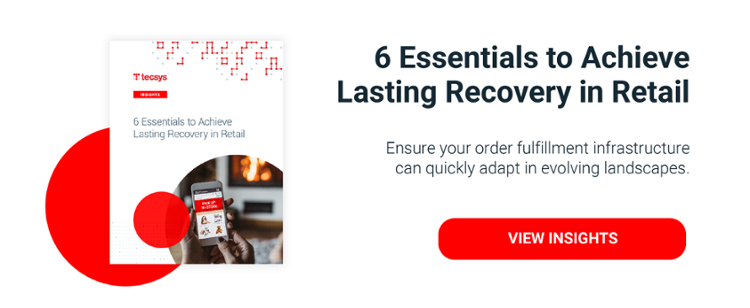Retail Transportation Excellence Masters All the Miles – First, Middle, Last

Most retailers consider retail transportation in terms of last mile and parcel delivery. Undoubtedly, this area is a large cost center in your supply chain and is constantly being scrutinized. Finding ways to better manage transportation operations in order to reduce costs and improve service is vital to your success. But what if the last mile is not the only mile marker you should be concerned about when it comes to retail transportation success?
Last month, we discussed how to prepare for the future of retail logistics and continued the conversation in a post about getting your retail fulfillment channels integrated. If you’ve been following along, you hopefully noticed a similar theme being woven together – and that’s the importance of stitching the gaps in your retail supply chain.
Yes, the last mile is important for retail transportation excellence, but it’s not the only mile in the journey. Truly positive outcomes come when you have taken the time to integrate all the miles in your supply chain. Let’s look at each important mile marker and key points to focus on.
Retail Transportation Excellence: The First Mile
The first mile is your supply chain starting point when goods are sent from suppliers to main distribution points. In order to position your business for success in this first mile of the journey, you need to ensure integration with your supplier partners. Do you have the visibility to treat every incoming order as if it were already your product with estimated dates/times that can be committed to middle mile status? Can you decide if it is worth the additional expense to go express sea freight or air to take advantage of a positioning opportunity or avoid a time-based loss of opportunity? As the retail industry continues to evolve, it will benefit you to have an increasingly streamlined, transparent supply chain – even at this first mile. Make sure you have the tools to evaluate suppliers and carriers in order to understand their performance on promised delivery schedules and estimated costs.
Retail Transportation Excellence: The Middle Mile
The middle mile journey is when products go from a distribution center to intermediate locations like a physical store or another local third-party fulfillment facility. This is another instrumental mile marker for data integration. You must have visibility on everything you hand to the intermediate locations, including availability, time to stage for shipment and delivery times. Make sure you know the true time and cost associated with receiving and storing. Is it worth it to have large inventories to hedge against supply chain disruptions or tariff increases? Retailers of the future will treat the middle mile as the new backroom of the business, pre-positioning in locations that anticipate demand, but flexible enough to detect and reposition to meet opportunities as necessary to get the most overall return from products. This trend toward micro-fulfillment centers in urban locations is an area to keep your eye on in the coming months and years.
Retail Transportation Excellence: The Last Mile
The last mile is the customer-facing mile and the one most associated to retail transportation headaches. Make sure you are prepared to provide the options you promise to customers. Is it in stock? Great. Then can you get it ready for the customer to pick up in-store or have it delivered in the time they want? Typically, this is a data black hole in most retail logistics networks — and it’s even more complicated when third-party facilities are involved. I recommend you invest and control your own system or find a partner who can demonstrate true seamless data integration. No matter where the product is located, it should be visible as just another pickable inventory location that has an expected time of delivery. Once the product is delivered to the customer, don’t forget to thank the customer and ask whether everything met their expectations. Make it easy to get a response via a text message. This last electronic “mile” marker can help keep your customer coming back.
Supply Chain Integration
At the end of the journey, your retail transportation success is going to depend on how well you were able to eliminate the silos at every mile in your supply chain. Stop working with disparate systems and physical locations. You need to build a unified structure that is inextricably linked and works in lockstep to ensure a seamless customer experience through supply chain efficiency.




